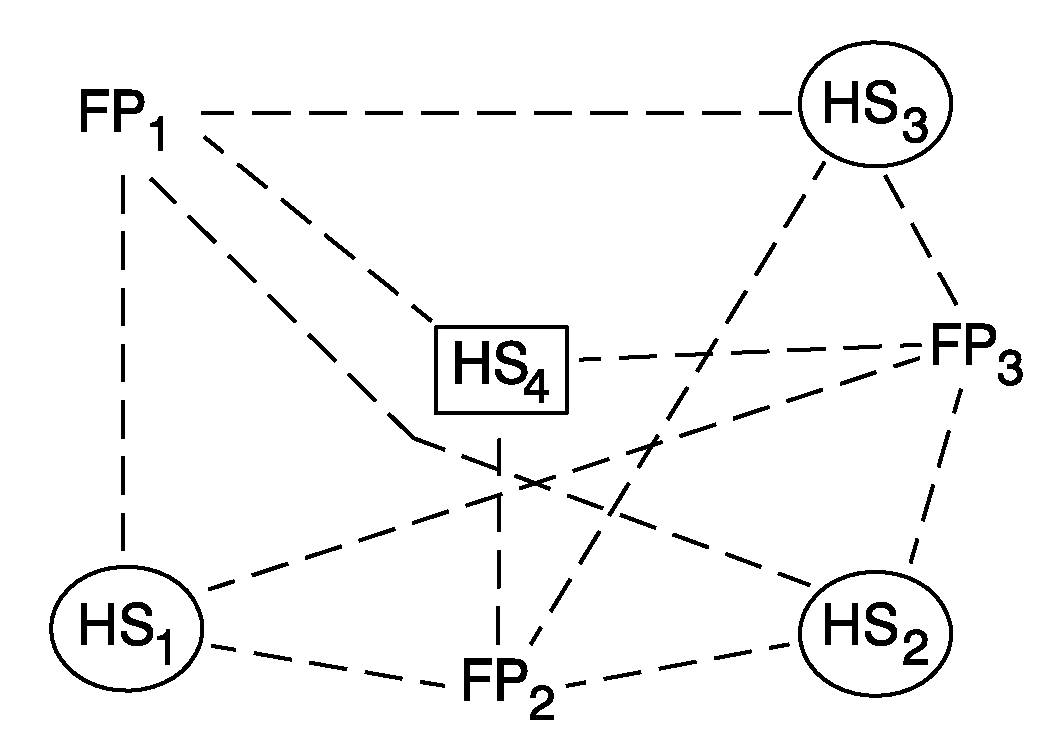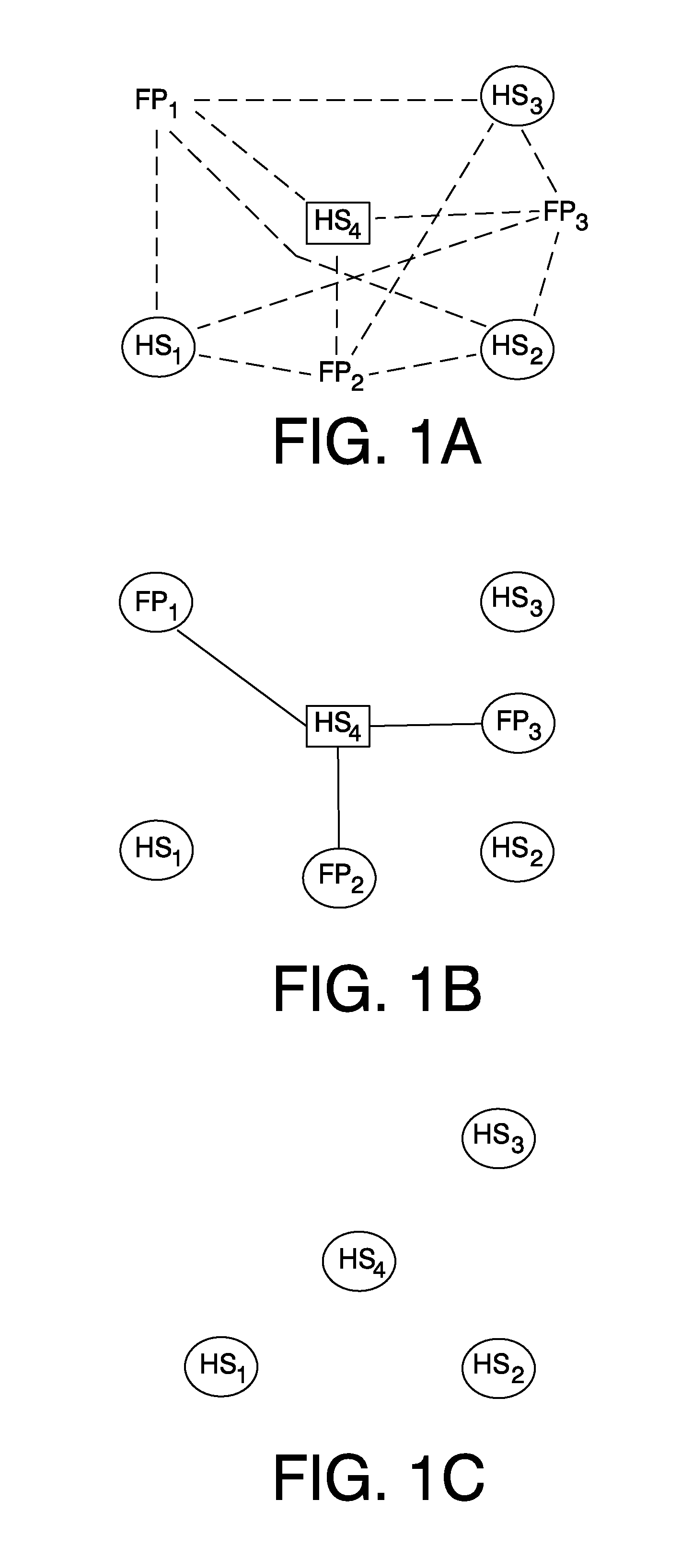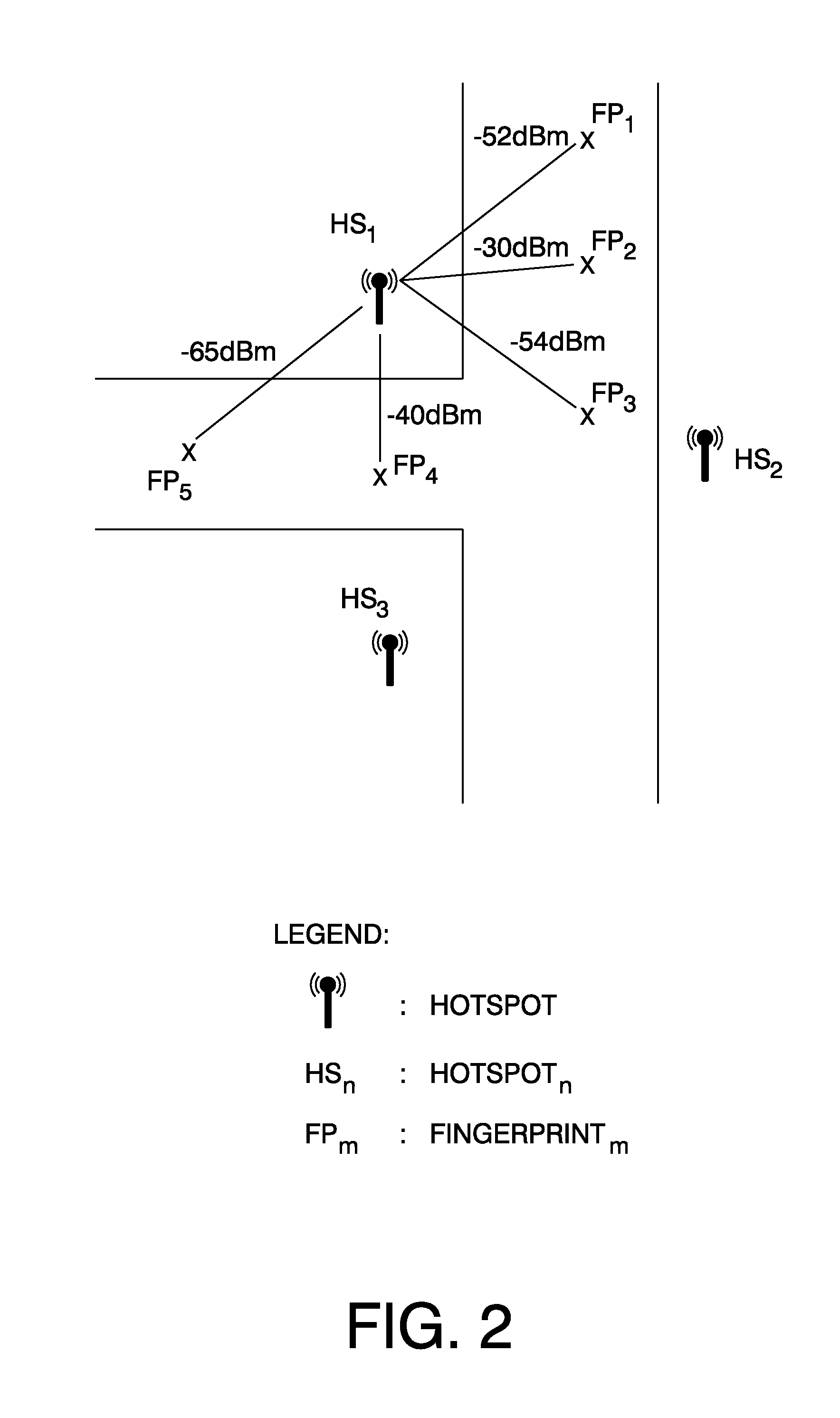Determining positions in a wireless radio system
a wireless radio and position determination technology, applied in the direction of measuring devices, instruments, electrical equipment, etc., can solve the problems of not being detected, not being able to access all places with a motor vehicle, and high cost of war-driving, so as to improve quality and accuracy.
- Summary
- Abstract
- Description
- Claims
- Application Information
AI Technical Summary
Benefits of technology
Problems solved by technology
Method used
Image
Examples
first embodiment
of the Invention
[0052]Referring now to FIGS. 1A-1C, a first embodiment of the present invention will be described.
[0053]A radio-map is a set of hotspots containing their positions and some unique parameters of them. At any point of time, the radio-map can have 2 categories of hotspots:
[0054]1) Those calculated by using fingerprints with geo-positions associated (from war-driving for instance).
[0055]2) Those related to fingerprints without any geo-position assigned (orphan hotspots).
[0056]Radio-Map Expansion Algorithm
[0057]The first embodiment of the present invention relates to a method for expanding the radio-map by estimating and including the position of such orphan hotspots.
[0058]The method consists of the following steps:[0059]For every orphan hotspot, select all the fingerprints that have seen the orphan hotspot. This step is schematically shown in FIG. 1A. The hotspot HS4 of which the position is unknown and to be estimated (schematically indicated in the figure by the rectan...
second embodiment
of the Invention
[0071]Referring now to FIGS. 2-4, a second embodiment of the present invention will be described.
[0072]The second embodiment relates to a WiFi positioning method with a higher accuracy than known WiFi positioning methods. It can be used for estimating the position of a hotspot that is “seen” on a number of fingerprints taken at different measurement locations with a known geo-position. An example thereof is schematically shown in FIG. 2. Here hotspot HS1 is seen on fingerprints FP1, FP2, FP3, FP4 and FP5 with a signal power of −52 dBm, −30 dBm,−54 dBm, −40 dBm and −65 dBm, respectively. Although, in this example only 5 fingerprints are shown, in practical situations this number may be usually much higher. The signal of the hotspot HS1 seen on each of the fingerprints FP1, FP2, FP3, FP4, FP5 corresponds to one measurement (so in the example of FIG. 2 there are five measurements).
[0073]It can also be used for estimating the position of a wireless enabled (end-user) dev...
third embodiment
of the Invention
[0099]Referring now to FIG. 5, a third embodiment of the present invention will be described.
[0100]The third embodiment relates to a trilateration process. As discussed herein above, trilateration is a method of determining the relative positions of objects using the geometry of triangles in a similar fashion as triangulation. Unlike triangulation, which uses angle measurements (together with at least one known distance) to calculate the subject's location, trilateration uses the known locations of two or more reference points, and the measured distance between the subject and each reference point. To accurately and uniquely determine the relative location of a point on a 2D plane using trilateration alone, generally at least 3 reference points are needed.
[0101]The trilateration in FIG. 5 is shown for the case that the position of a wireless enabled device is determined based on three detected hotspots HS1, HS2, HS3 in a fingerprint FP1. However, the trilateration ac...
PUM
 Login to View More
Login to View More Abstract
Description
Claims
Application Information
 Login to View More
Login to View More - R&D
- Intellectual Property
- Life Sciences
- Materials
- Tech Scout
- Unparalleled Data Quality
- Higher Quality Content
- 60% Fewer Hallucinations
Browse by: Latest US Patents, China's latest patents, Technical Efficacy Thesaurus, Application Domain, Technology Topic, Popular Technical Reports.
© 2025 PatSnap. All rights reserved.Legal|Privacy policy|Modern Slavery Act Transparency Statement|Sitemap|About US| Contact US: help@patsnap.com



